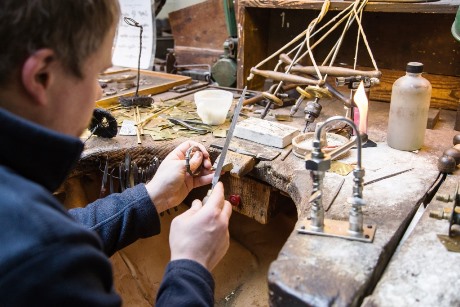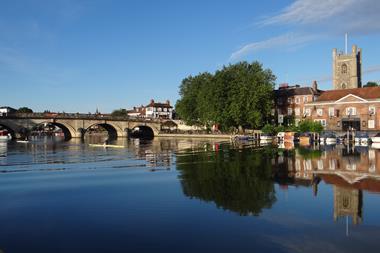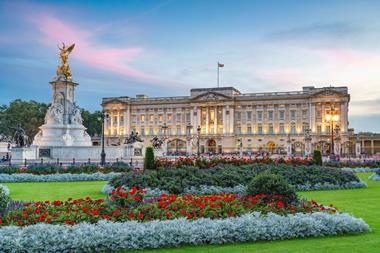
It’s Museum Week, which gives Group Leisure & Travel plenty of reason to pick out some of the most exciting, obscure and jaw-dropping museums from across the nation.
Running from 19th to 25th June, Museum Week celebrates all things – you guessed it – museum-related. And with an estimated 2,500 museums in the UK, group travel organisers certainly won’t be lacking when it comes to choice in subject matter, levels of interactivity and displays that make you go “wow!”
But where to start? Greater London alone is reported to have over 200 registered museums (as of 2016) and new ones are springing up all the time. The Postal Museum, for example, will open in the capital in July and showcase the history of Britain’s mail system and the forgotten underground railway it ran on. Groups will be able to learn about Britain’s industrial heritage, and explore inspiring galleries packed with objects, stories and interactive displays.

Pictured: The Postal Museum. (Photo credit: Miles Willis).
Also worth a look in where you’re in the city is The Museum of London. This establishment showcases everything you could ever wish to know about London’s past, from its wars, plagues and fires to its role within the world as a whole. New for 2018 at this museum will be a series of London Nights. Running from May to November, these evening events will allow visitors to explore the capital’s past after dark through historic and contemporary photography. Group booking discounts and exclusive curator talks will be available.
Those groups who’d rather avoid the urban jungle and are happier by the sea can head to Boscastle in Cornwall, where the mysterious Museum of Witchcraft and Magic awaits. A quaint building houses what’s reportedly the oldest and largest collection of items related to witchcraft and magic. New this year is an exhibition that examines cursing, and visitors can find out about cursed dolls and the human stories behind their creation. Group benefits include free guided tours, which are available when booked in advance, and tour guides and GTOs go free.

Pictured: Museum of Witchcraft and Magic.
If motorsports are more your thing, swing past the Beaulieu National Motor Museum in Hampshire to discover over 250 vehicles from every motoring era. Vehicles range from some of the world’s most iconic land speed record breakers to motoring oddities such as a giant orange on wheels. Combine the museum with a tour of 13th century Beaulieu Abbey and Palace House, where a private wing recently opened for visitors with the launch of the new exhibition, The Lady and the Rebel which informs visitors about two women in the Montagu family.
Continue the theme of transport by visiting the Bury Transport Museum in Lancashire. Built in the Victorian era as a warehouse to handle international shipping, the museum is now home to a host of transportation highlights, from horse drawn carriages and steam powered traction engines, to new powered automobiles. The museums works closely with sister attraction The East Lancashire railway, so groups can combine their trip with a ride on a restored steam engine if desired.

Pictured: Beaulieu National Motor Museum.
Off to Scotland in the near future? There are nine museums in Glasgow that groups can try to fit in, including Kelvingrove Art Gallery and Museum; the Riverside Museum; the St Mungo Museum of religious Life and Art; and the Glasgow Museums Resource Centre (GMRC). Across these institutions groups can see fine art, historical artefacts, natural history, and arms and armour, and there is a variety of engaging tours that groups can arrange.
Get to grips with the history of medicine at Dr Jenner’s House, Museum and Garden in Berkeley. This attraction traces the impact of one of the pivotal events in world history, and is the house where Edward Jenner, pioneer of the vaccination against smallpox, lived and told the world about his work. The museum showcases displays and artefacts that allow visitors to learn more about Jenner’s life and interests, which included history, fossil hunting, music and poetry.
And if it’s something sparkly that’s more likely to grab your group’s attention, make time to visit the Museum of the Jewellery Quarter in Birmingham. It depicts the city’s jewellery and metalworking heritage, and offers a glimpse of working life in the city’s famous area. Groups can enjoy a guided tour of the factory which includes demonstrations in traditional jewellery making. Perks include free admission for GTOs and coach drivers, familiarisation trips and special group rates.

Pictured: Museum of the Jewellery Quarter.
Five fascinating museum facts:
• The word museum comes from the Greek ‘mouseion,’ the temples dedicated to the Muses and the arts they inspired. It’s reported that in the 4th century BC, Aristotle founded a mouseion at his school from a collection of zoological specimens.
• Figures released by the Association of Leading Visitor Attractions (ALVA) earlier this year indicated that the British Museum remained the most popular UK attraction for the tenth year running in 2016, with 6,420,395 people passing through its doors.
• The Ashmolean Museum in Oxford is reportedly the UK’s oldest museum. Its first building was erected in 1678–1683 to house the cabinet of curiosities that Elias Ashmole gave to the University of Oxford in 1677.
• In July 1973, the Victoria and Albert Museum became the first museum in Britain to stage a rock concert. In typically subtle style, the event presented a combined concert/lecture by British progressive folk-rock band, Gryphon.
• The weirdest museums across the globe range from The Icelandic Phallological Museum in Iceland to Iceland to the Salt and Pepper Shaker Museum in Tennessee. Other contenders for the most bizarre collections include the Dog Collar Museum in England, the National Mustard Museum in Wisconsin, and Museum of Broken Relationships in Croatia.
For further museum inspiration, and for more information about how you can get involved in future Museum Weeks, head to www.museum-week.org.












